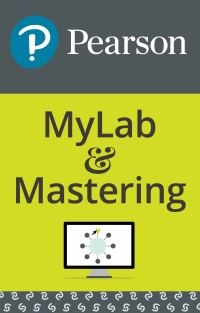Question
You have been provided the following actual financial information from the reformulated financial statements of Quesnel Ltd. for the year 2020, and then a set
You have been provided the following actual financial information from the reformulated financial statements of Quesnel Ltd. for the year 2020, and then a set of forecasted financial information for the three-year period, 2021 2023.
2020 A 2021 E 2022 E 2023 E Sales $500,000 $525,000 $540,000 $550,000 Operating Profit Margin (after tax) 9% 9% 9% 9% Financial Leverage 1.126 1.111 1.077 1.064 Net Financial Obligations (NFO) $80,000 $85,000 $87,500 $90,000 In conjunction, you have also been provided with the following additional information: the forecasted growth rate in comprehensive income after tax (CI) after 2023 is 4% Quesnels cost of equity capital is 8% Quesnels net borrowing cost (NBC) after tax is 4% Quesnel has no Other Comprehensive Income (OCI) items to report during any years Quesnel has 100,000 common shares outstanding Using the Abnormal Earnings (Residual Income) valuation model, what is the intrinsic value of a common share of Quesnel Ltd. based on the forecasts and additional information presented above? 1. $12.12 2. $10.55 3. $5.78 4. $9.84
The current market-to-book (M/B) and forward price-earnings (P/E) ratios for two companies, X Ltd. and Y Inc., are presented below. The two companies are direct competitors in the same industry sector, produce the same product and sell it to the same set of customers. They have the same scale of operation and the same capital structure. The average values of the market-to-book (M/B) and forward price-earnings (P/E) ratios for the industry sector are also presented below. X Ltd. Y Inc. Industry Mean Price-Earnings (P/E) ratio 9.00 2.50 5.00 Market-to-Book (M/B) ratio 1.25 0.75 3.90 Based on this information, which of the following statements MUST be TRUE? 1. The market believes that the abnormal earnings (residual income) of both X Ltd. and Y Inc. are negative because each has a market-to-book (M/B) ratio that is well below the industry mean value 2. The market believes that the two companies have the same risk since they have the same capital structure 3. The market believes that X Ltd.s abnormal earnings (residual income) will increase more than the abnormal earnings (residual income) of Y Inc. 4. The market believes that X Ltd.s earnings (NPAT) will increase more than the earnings (NPAT) of Y Inc.
Step by Step Solution
There are 3 Steps involved in it
Step: 1

Get Instant Access to Expert-Tailored Solutions
See step-by-step solutions with expert insights and AI powered tools for academic success
Step: 2

Step: 3

Ace Your Homework with AI
Get the answers you need in no time with our AI-driven, step-by-step assistance
Get Started


